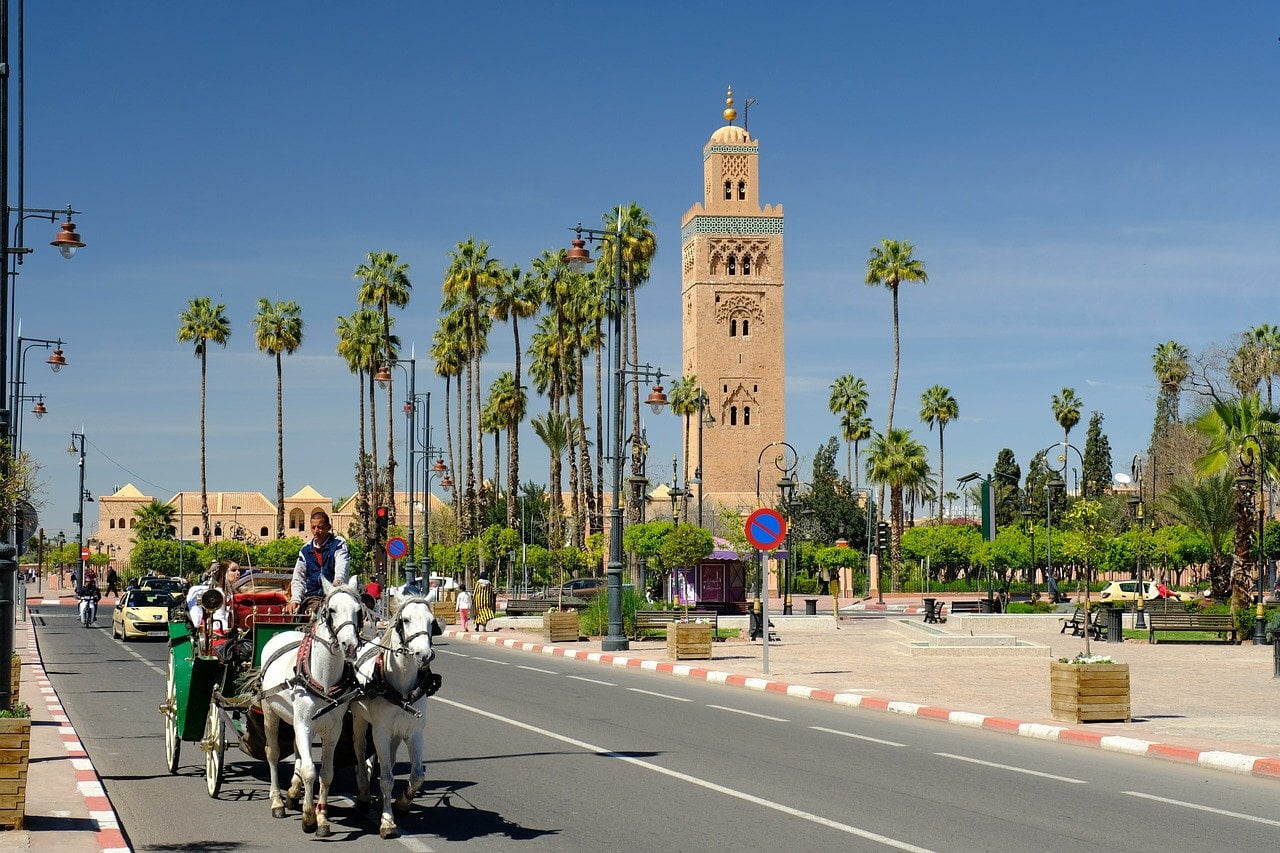
Marrakech in Morocco is the most fantastic city. It is colourful, vibrant and exotic, the architecture is incredible, there is history and culture everywhere and the people are amazing. It can also be a fairly overwhelming city because of the amount of people, the narrow streets and the incredible street life. We would suggest you spend a few days in Marrakech, even a week, and we are going to share our top travel tips with you, to make navigating Marrakech easier.
Start with a guided walking tour
Once you have settled into your hotel or riad, book a walking tour with a local guide. Marrakech is amazing on foot, and walking the markets and ancient city is the best way to do it. A guide will know exactly which way to go and where you should go, and will also help you with negotiating or bargaining with local shopkeepers. Wear comfortable walking shoes, for women it is good to have a scarf in your bag in case you need to go anywhere that requires a headscarf, and keep your bag close to you too.
Give yourself a few landmarks
Once you have navigated Marrakech with a guide, you may be ready to navigate on your own. Things will be more familiar to you. Your hotel staff will point you in the right direction, or call a taxi for you if that is easier. Once you are on foot, make notes of landmark buildings or streets so you can easily find your way back to your starting point. Google maps is also a good idea, but you may not want to take your phone out all the time. Also, ask the locals about directions. Locals are friendly and always keen to help, in particular shopkeepers.
Dress appropriately
Women should dress with a little decorum, meaning keep your knees covered, your cleavage covered and it is best to wear a short sleeve. People in Morocco are conservative and it’s best to be conservative too. And carry that headscarf for when you do need to cover up.
Carry a tote bag
Keep a tote bag, or two, in your own bag for your shopping. You don’t want to use plastic and not everyone has brown paper bags or similar. And you will shop!
Bargain, but bargain with a conscience.
Everyone bargains in Morocco but you don’t want to rip anybody off. Goods are fairly inexpensive in Morocco and in the souks of Marrakech, and the exchange rate is on your side. Be mindful when you bargain.
Drink bottled water
Be careful of the tap water. It may just be that your stomach takes a bit of time to get used to the water in Marrakech, and most hotels will give you filtered water anyway. You don’t want to use plastic but sometimes, you need to buy bottled water.
Ask permission to take photographs of people
Almost everyone will say yes, but most people (around the world) really appreciate you asking before you photograph them. Marrakech is a photographer’s delight but if you are taking portraits of people, ask permission first.
Explore, eat the food and have fun
Go with the flow. Don’t be neurotic or anxious about food, try it all, try new things and meet new people. Marrakech is incredible. Be sensible, be streetwise and have the best time!
Morocco Walking Tours

Merzouga Walking Tour With Horse Riding
5 Day Tour
Explore the beauty of Morocco with a unique Walking Tour featuring Horse Riding. Traverse the captivating Dades & Todra Gorges on a thrilling horse trek in Ouarzazate, before reaching the Merzouga Sahara Desert at Erg Chebbi and immersing yourself in a truly authentic desert experience. The Nomadic Desert Camp at Merzouga offers a warm Berber welcome, where you can spend your evenings around a campfire under a star-lit sky. Add a cultural touch to your adventure by stopping for lunch in Agdz town. This tour promises an immersive Moroccan experience filled with adventure, culture, and scenic beauty. Make the most of your Moroccan Holiday with this unforgettable journey.

Atlas Mountains & Sahara Walking Tour
6 Day Tour
Embark on a magical journey through Morocco with the Atlas Mountains & Sahara Walking Tour. This unique adventure promises to take you through some of the country’s most breathtaking landscapes and immerse you in its rich culture. The trek through Toubkal Region is something like no other, with a local expert guiding you to the summit of Mount Outousse. You’ll also get the chance to visit the UNESCO World Heritage Berber town of Ait Ben Haddou. The tour includes a myriad of stellar experiences, with lush valleys, desert expanses, and the verdant palms of the Draa Valley. Don’t forget to explore the heart of the Sahara Desert, trekking through majestic dunes with an experienced Berber team. The Atlas Mountains & Sahara Walking Tour is an unforgettable experience that will leave you with a newfound appreciation of Morocco’s natural beauty and cultural richness.













